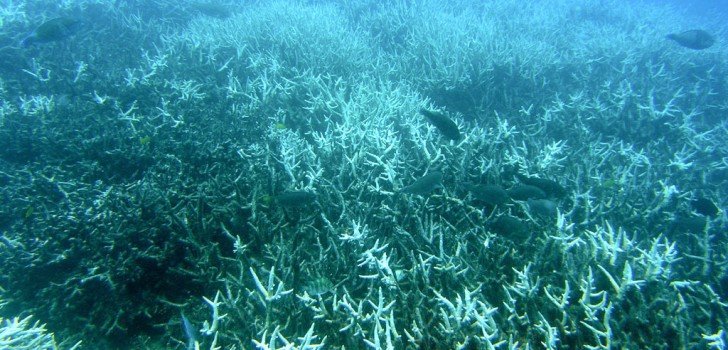In a mere five years, many coral reefs in the environs of Christmas Island have changed from lively ecosystems to ugly graveyards, thanks to a strange syndrome that researchers have absolutely no idea about, says Elizabeth Preston reporting for Hakai magazine.
The syndrome, which researchers refer to as “the white syndrome,” destroys the tissues of the coral reefs leaving a whitish skeleton of calcium carbonate behind. This phenomenon is quite different from the common coral bleaching, which also leaves the coral looking white, but does not directly destroy the corals.
For some strange reason, the mysterious disease only affects one genus known as the Acropora – the corals that make up the backbone of almost all reefs in the pacific and Indian oceans. The exact manner in which the syndrome infects and spreads among the corals remains a tough puzzle for the scientists and researchers.
While scientific research has associated the mysterious disease with things such as parasitic worms, pathogenic microbes and the continually rising water temperatures, Preston explains that the term “white syndrome” is utilized as a catchall for the unknown factors that have a similar effect.
The mysterious white syndrome was first noticed by scientists in 1998 around the Great Barrier Reef. It has since become common in the Red Sea and the Caribbean islands. According to Preston, the outbreak at Christmas Island is the very first occurrence of the disease in the Indian Ocean.
The latest analysis of the mysterious outbreak indicates its lethal and quick spread between 2008 and 2013. At some particular areas around the Christmas Island, the disease has destroyed about 96 percent of the local corals.
According to Preston, factors like ocean acidification and climate change pose a bigger threat to the organisms than the mysterious disease. However, that does not alter the hazardous nature of the mysterious white syndrome – nevertheless, stunningly delicate reefs protect both people and wildlife from danger.
Scientists say the mysterious outbreak has hit epidemic levels, and they speculate if the coral may initially be weakened by contamination, which makes it more vulnerable to infection. Although researchers have not come across proof that the syndrome may affect other wildlife or humans, if the coral is totally destroyed, then all of the turtles, fish and different invertebrates that are dependent on it will soon be destroyed, too.
Stay Connected